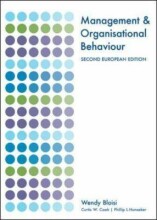Problem Recognition and Information Search - External Search: Searching for Information from the Environment
5 important questions on Problem Recognition and Information Search - External Search: Searching for Information from the Environment
When there is missing information, consumers engage in external search. There are two types of external search. What are these?
2. Ongoing search: occurs on a regular and continual basis, even when problem recognition has not been activated (eg consistently reading magazines).
There are a lot of different factors influencing a consumers buying decision in external search. What are some important insights from research regarding internet en social media sources?
- A company's website must be carefully designed in terms of 4 key dimensions: 1. Informativeness, 2. Entertainment, 3. Social presence and 4. Sensory appeal. But the importance of each dimension differs per nature of brand.
- Cross-device shopping aids purchase rates.
- Increased activity on social-media is positively linked with shopping activity.
Consumers are buying online more frequently, but online marketers tend to be less successful still when shoppers cannot judge the quality of a product. How can marketers solve this problem?
- By facilitating extended searches (even for inexpensive items like books this boosts sales)
- Taking into account that many consumers look for information online, and finish the purchase in person when we talk about large purchases.
- Higher grades + faster learning
- Never study anything twice
- 100% sure, 100% understanding
The extent and nature of external search differs per type of good. What are the main differences?
2. Search goods: cast the net wider, but spending less time on each web page.
MAO also plays a role in the extent of external search. What are the eight factors that increase motivation?
- Involvement and perceived risk
- Perceived costs and benefits: consumers tend to continue searching until they perceive that the costs (can be time, effort, money etc) outweigh the benefits.
- Consideration set: if it's large, then motivation is higher.
- Relative brand uncertainty
- Type of product: hedonic products are searched more, because preferences for hedonic products are more unique to the consumer.
- Attitudes toward search
- Discrepancy of information
- Presence of others: people dont like to be observed when they are shopping
The question on the page originate from the summary of the following study material:
- A unique study and practice tool
- Never study anything twice again
- Get the grades you hope for
- 100% sure, 100% understanding
































